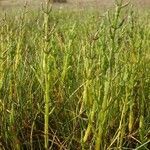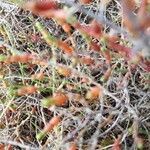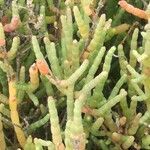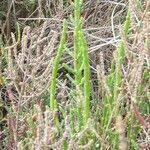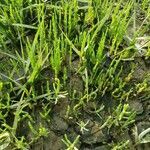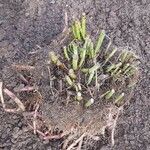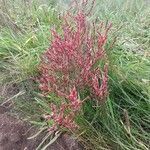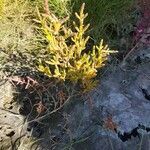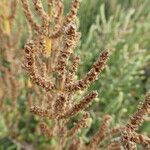Annual, 1–5 dm, erect or the lower branches prostrate; scales below the spike obtuse or rounded; spikes erect or ascending, 2–6 × 1.5–3(–4.5) mm, the joints mostly 2–4 mm; fls broadly obovate, the central one much surpassing the lateral ones but reaching only to 0.5–1 mm below the node above; seeds 1.3–2 mm; 2n=18, 36. The commonest sp. of salt marshes; Que. to Fla., and in saline soil inland to Mich.; also Alas. to Calif., W.I., and widespread in the Old World. (S. herbacea; S. prostrata)
An annual herb. The stems let light through. It grows 50 cm tall. They are erect but can lie along the ground. The stems are green with a pink colour at flowering time. The leaves are opposite and like scales. The flowers are very small and in groups of three. They are green. They form a spike 10-50 mm long. The fruit are small and like seeds and 1-3 mm across. They are light brown.
